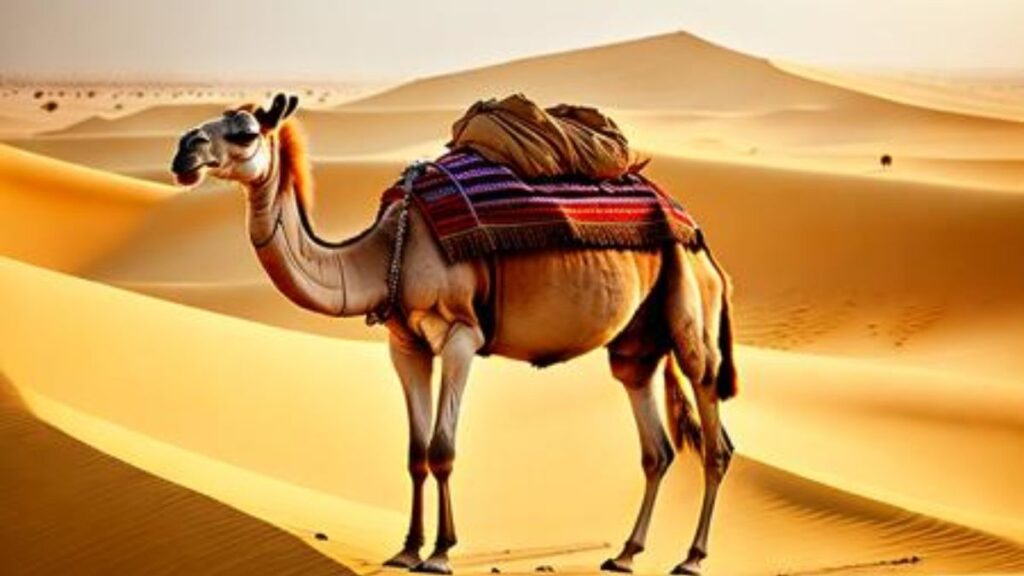
India, a land rich in cultural diversity and natural wonders, is also home to one of the most iconic animals — the camel, often referred to as the “ship of the desert.” However, despite the increasing global camel population, India is witnessing a dramatic decline in its camel numbers. From being a vital part of the country’s economy and heritage, the camel is now under severe threat. In this blog post, we explore the factors behind the decline in India’s camel population and what needs to be done to save them.
Global Camel Population Surge
Globally, the camel population has been on the rise. According to the United Nations, the global population of camels has grown significantly from 13 million in the 1960s to an impressive 35 million today. Countries in Africa and the Middle East, such as Chad, Somalia, Sudan, and Saudi Arabia, are leading the charge in camel numbers. Chad alone has approximately 10 million camels, the highest in the world, followed by Somalia and Sudan.
However, in India, this growth is not visible. In fact, India is facing a reverse trend where the camel population is sharply declining. The stark contrast is alarming, especially considering that India once had a thriving population of these majestic creatures.
India’s Camel Crisis
In the early 1960s, India had about 1 million camels. But today, that number has drastically reduced to just 200,000, reflecting a staggering 80% decline over the past six decades. This decline has been particularly evident in recent years, with Rajasthan, a state known for its desert landscape and camel herding, seeing a sharp drop in numbers.
Rajasthan once had approximately 420,000 camels in 2007, but by 2012, that number had dropped to 325,000. By 2019, the population had further dwindled to just 210,000, a decline of 35% in only seven years. This decline is not just a number — it represents a fading tradition, cultural heritage, and an entire way of life.
Factors Contributing to the Decline
Several key factors are contributing to the dwindling camel population in India:
- Development and Urbanization: The surge in infrastructure development across western India, particularly in Rajasthan, has played a crucial role in displacing camels. The construction of new roads, highways, and transportation systems has led to the replacement of camels, which were once the primary mode of transport in rural areas, with vehicles.
- Agricultural Changes: Another factor behind the decline is the shift towards modern farming techniques. The introduction of new irrigation projects has led to the expansion of farmlands, which in turn has reduced the grazing lands available for camels. The installation of wind and solar farms has also impacted their natural habitat, leaving camels with less space to roam freely and graze.
- Loss of Grazing Land: Grazing lands that once provided camels with the food they need are increasingly being repurposed for urban development, farming, and industrial use. This has left camels struggling to find adequate resources to sustain themselves.
The Potential of Camel Milk
One of the more recent developments in the camel industry is the growing popularity of camel milk. Camel milk, often touted as a health drink, is gaining international recognition for its rich nutritional value. It has a low sugar content and is packed with essential vitamins and minerals. Nutritional experts are even calling it the “next superfood.”
In India, camel milk production is starting to gain traction, particularly in Rajasthan, where camel herders are milking nearly 2,000 camels. According to reports, camel milk production in the region generates up to $670,000 annually. This is just the tip of the iceberg, as there is immense potential to scale up camel milk production, which could not only help boost the income of camel herders but also provide a much-needed economic incentive to protect these animals.
A Call for Policy Support
Despite the growing awareness and market potential of camel milk, the industry faces significant challenges. There is an urgent need for policy support to address the ongoing crisis. India’s top animal husbandry officials have called for measures to protect camels by preserving grazing lands and promoting camel milk as a valuable commodity. A policy boost is crucial to ensuring that camels are not left “high and dry.”
By focusing on sustainable practices and increasing the production and consumption of camel milk, the government can incentivize camel herding and help preserve this iconic species. Such measures could also ensure that camels remain an integral part of India’s agricultural and cultural heritage.
Conclusion: A Bright Future for Camels?
While the decline in India’s camel population is a concerning issue, it is not too late to turn things around. By implementing targeted policies that protect their habitat and promote the economic benefits of camel milk, India can ensure that these “ships of the desert” continue to roam the landscape for generations to come. Protecting camels is not just about preserving an animal — it’s about safeguarding a tradition, a way of life, and a vital part of India’s heritage.
As more attention is drawn to the plight of camels, both domestically and globally, there is hope that India can overcome the challenges and offer these majestic creatures a fighting chance.
Also Read: Henley Passport Index 2025: India Slips to 85th, Singapore Tops the List
Disclaimer
This article is for educational purposes, focusing on the relevance of the topic for UPSC aspirants. Students should stay updated on further developments and refer to official sources for comprehensive preparation.
Follow Fusion IAS


